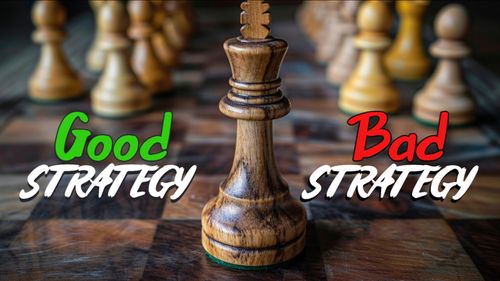Good Strategy / Bad Strategy Summary: The Key Points in Under 2 Mins
Mar 20, 2024 · 2 mins read
0
Share

"Good Strategy Bad Strategy" by Richard Rumelt dispels the fog around strategic planning, turning the abstract into actionable wisdom that can transform organizations.
Save
Share
Rumelt defines good strategy as a blend of coherent actions, insightful analysis, and clear objectives, a trifecta that propels companies beyond mere wishful thinking.
Save
Share
A hallmark of bad strategy is fluff – the jargon-filled language that masquerades as strategic but lacks substance, a pitfall Rumelt teaches readers to recognize and avoid.
Save
Share
The kernel of good strategy, as Rumelt describes, includes a diagnosis, guiding policy, and coherent actions, components that align to navigate complex challenges.
Save
Share
Rumelt emphasizes that a good strategy is not just about vision but about the 'how' – it's the bridge between ambition and execution, a roadmap that's both flexible and focused.
Save
Share
One of the book's key insights is that good strategy often leverages a "proximate objective" – a goal that is both achievable and directly advances the organization towards its ultimate aim.
Save
Share
Rumelt debunks the myth that more is better in strategy. Instead, he argues for simplicity and focus, advising leaders to concentrate their efforts where the most impact can be made.
Save
Share
The book is peppered with real-world examples, from Apple's innovation strategy to the turnaround of a university, illustrating the principles of good strategy in action.
Save
Share
"Good Strategy Bad Strategy" also tackles the psychology of decision-making, encouraging leaders to confront their biases and assumptions to make more informed strategic choices.
Save
Share
Ultimately, Rumelt's work is a clarion call to embrace the hard work of thinking critically and strategically, a reminder that the right strategy can be a powerful catalyst for change and success.
Save
Share
0